Published
Pocket Monsters: Red & Green Early Print Breakdown
A visual guide to the earliest physical prints for the games that started it all for Pokemon
By George W.
This post is the first part in a multi-essay series dedicated to Pocket Monsters. In this first entry, we'll cover Red and Green versions!
NOTE: This post is supplemental to the database. To see a list of first generation Pocket Monsters print variants as they exist on A Few Games, view them here. A full list of sources can be found at the end of this post.

Given they were the first games to release for the franchise in February 1996, Green and Red have some complex data behind them. The games themselves were prone to bugs, and multiple prints happened before the design settled near the end of 1996 in time for Blue version, then later in 1998 for Yellow version.
With the help of packaging references, official Nintendo interviews, and production data, here is a breakdown of the very early days of Pocket Monsters: Red & Green as physical games.
Box
There are two box prints to watch out for: pre-order (large UPC) and post-launch (small UPC) productions. Large UPC variants were part of the original 230,000 production run of Red and Green (update).
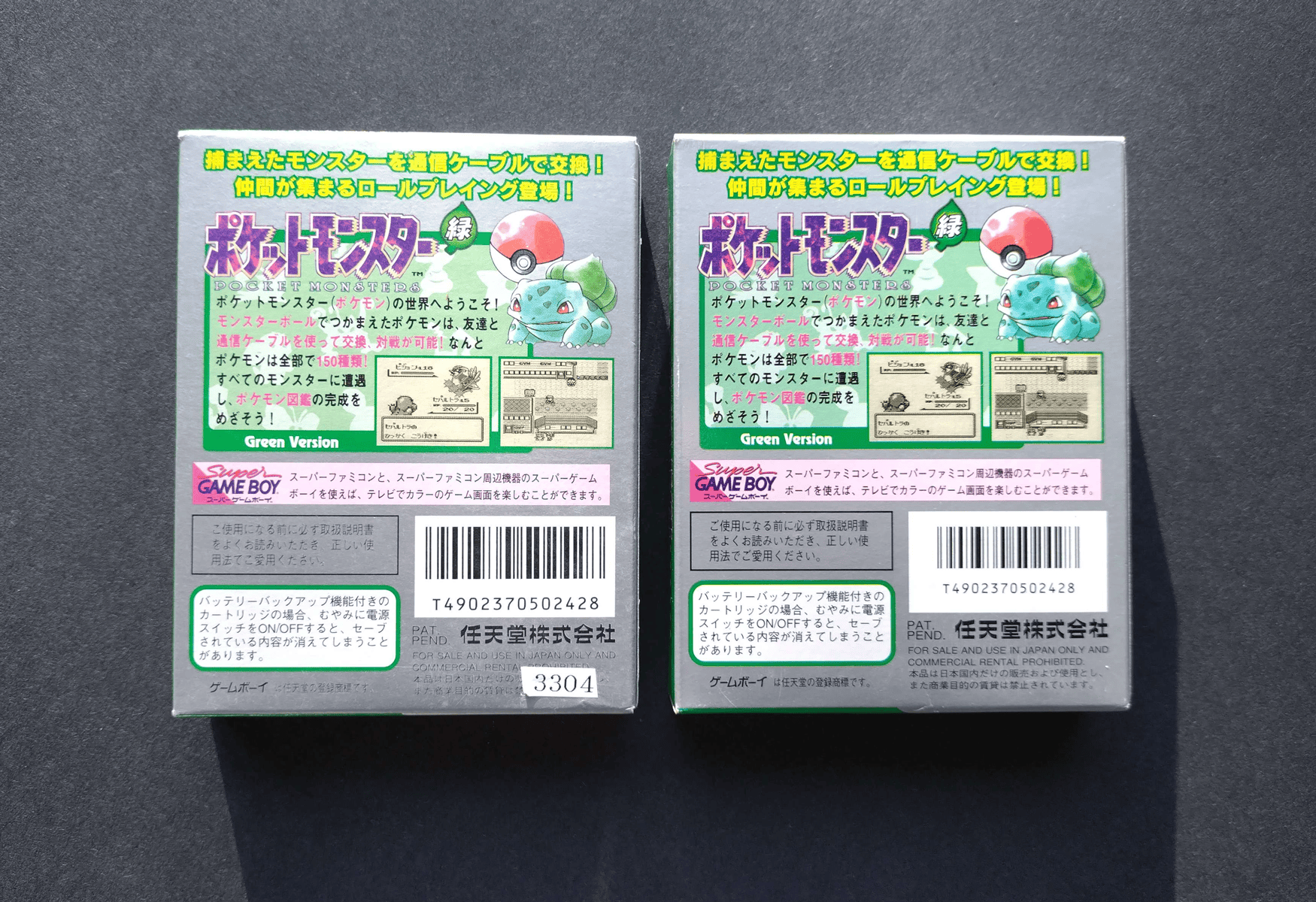
Green version: pre-order production (left) and launch production (right)
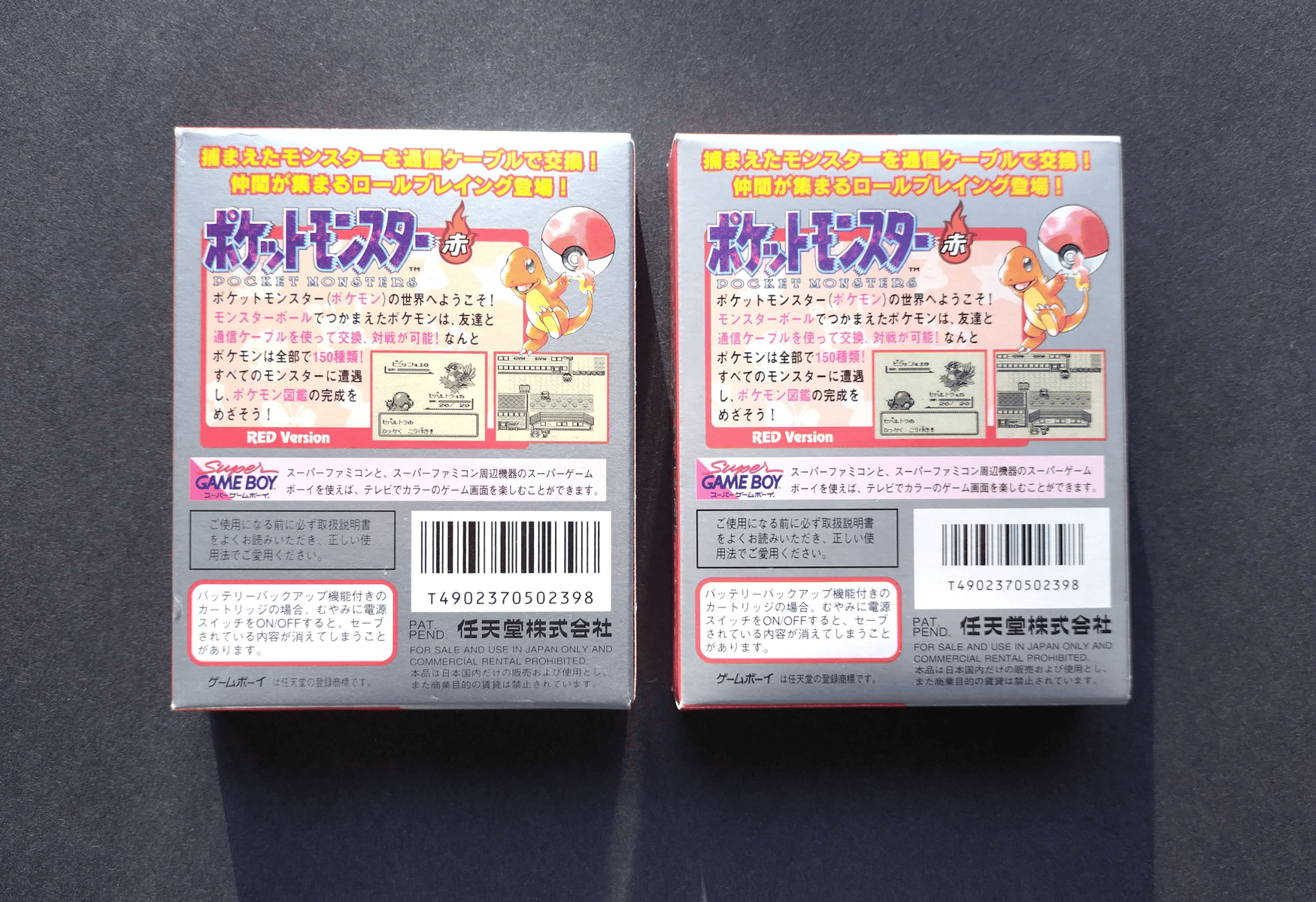
Red version: pre-order production (left) and launch production (right)
Contents
A few key components are important when identifying first production examples, particularly on the cartridge and the inclusion of a customer feedback postcard.
The only inserts included were the Super Game Boy ad and a yellow link cable insert. All copies included the manual (of course) and a fold-out map of the Kanto region.
Green Version


Red Version
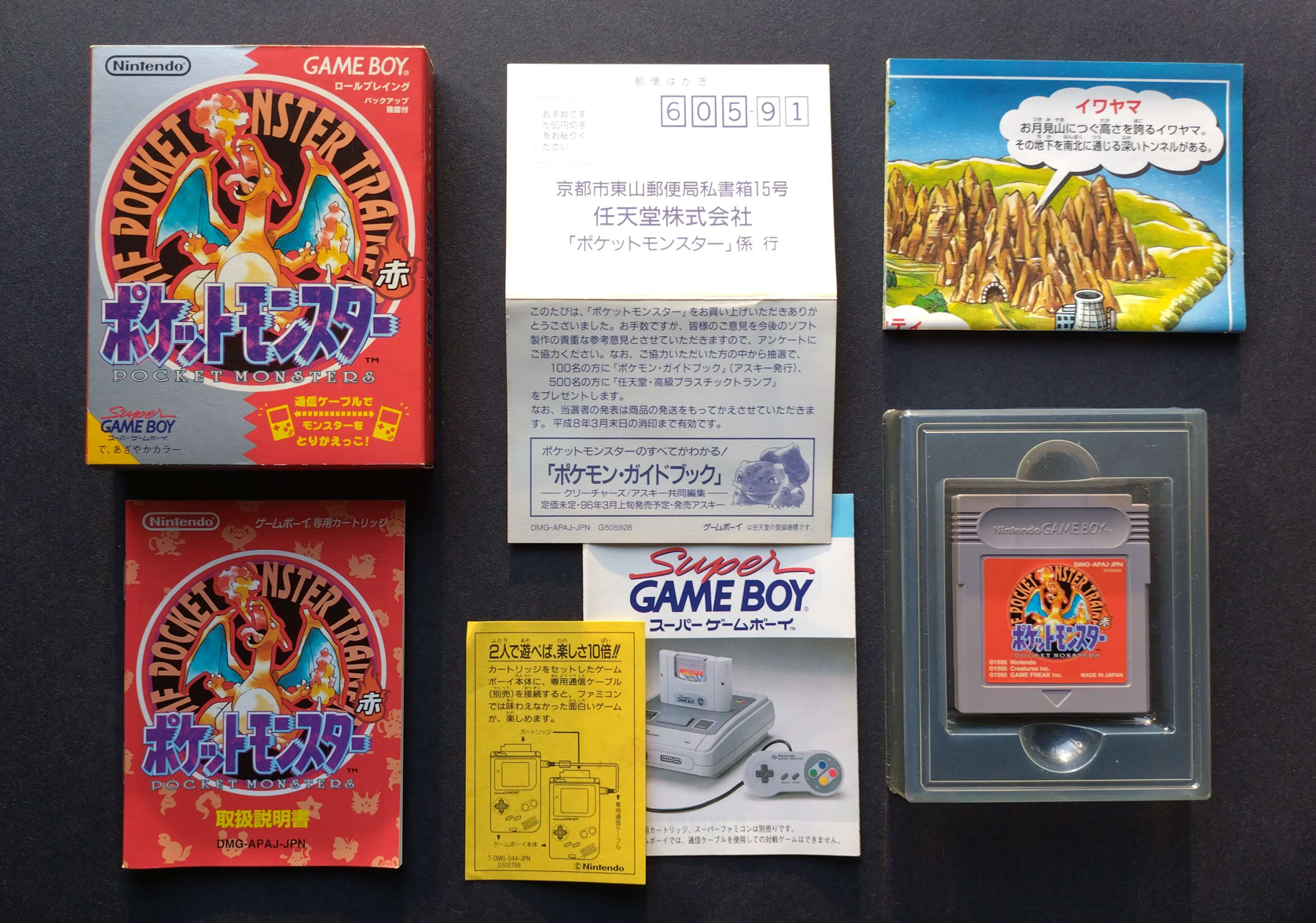
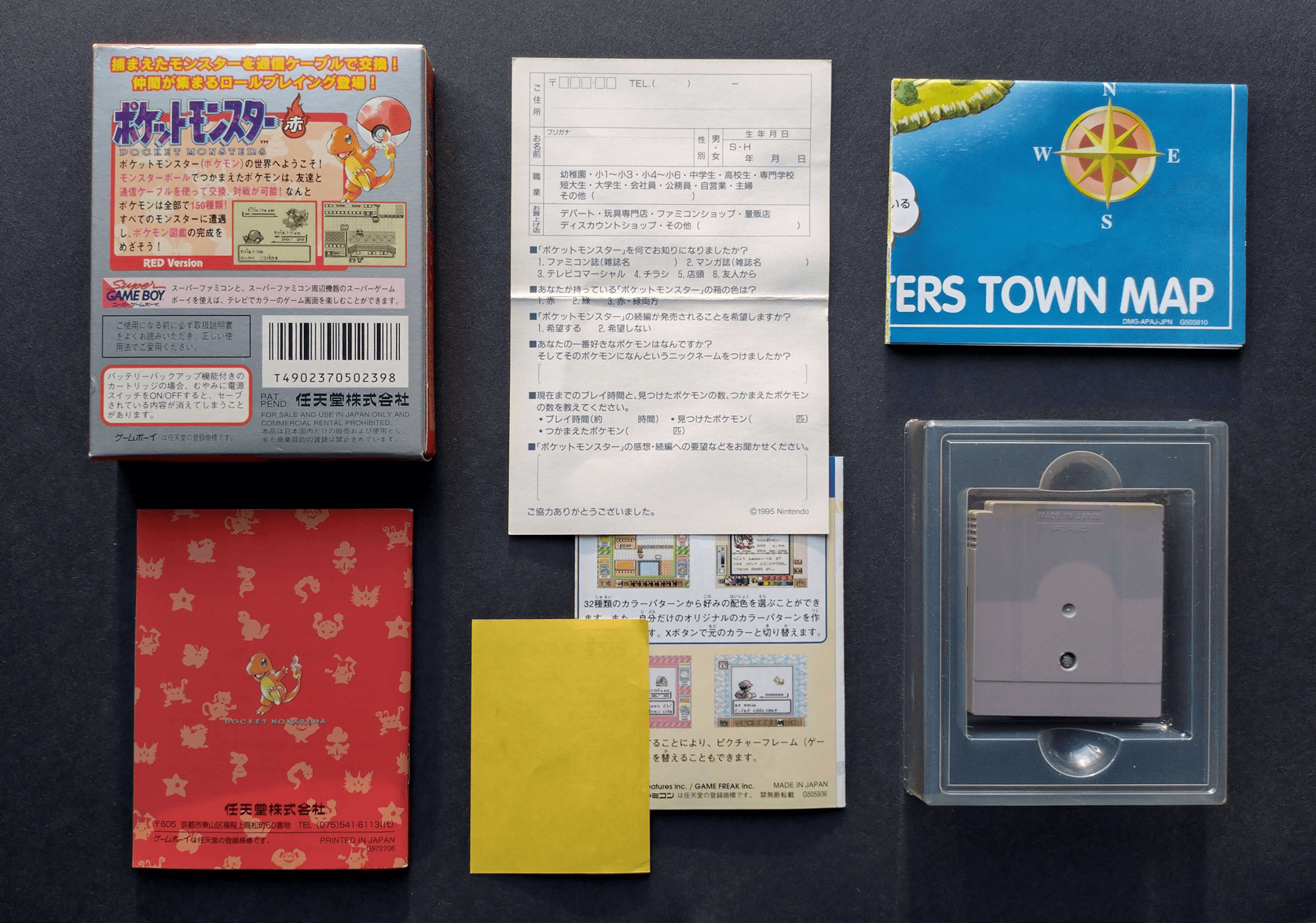
Cartridge
All Game Boy cartridges have a production stamp code on the label.
Here is a confirmed example of a first-production copy of Green version with 00 production code:
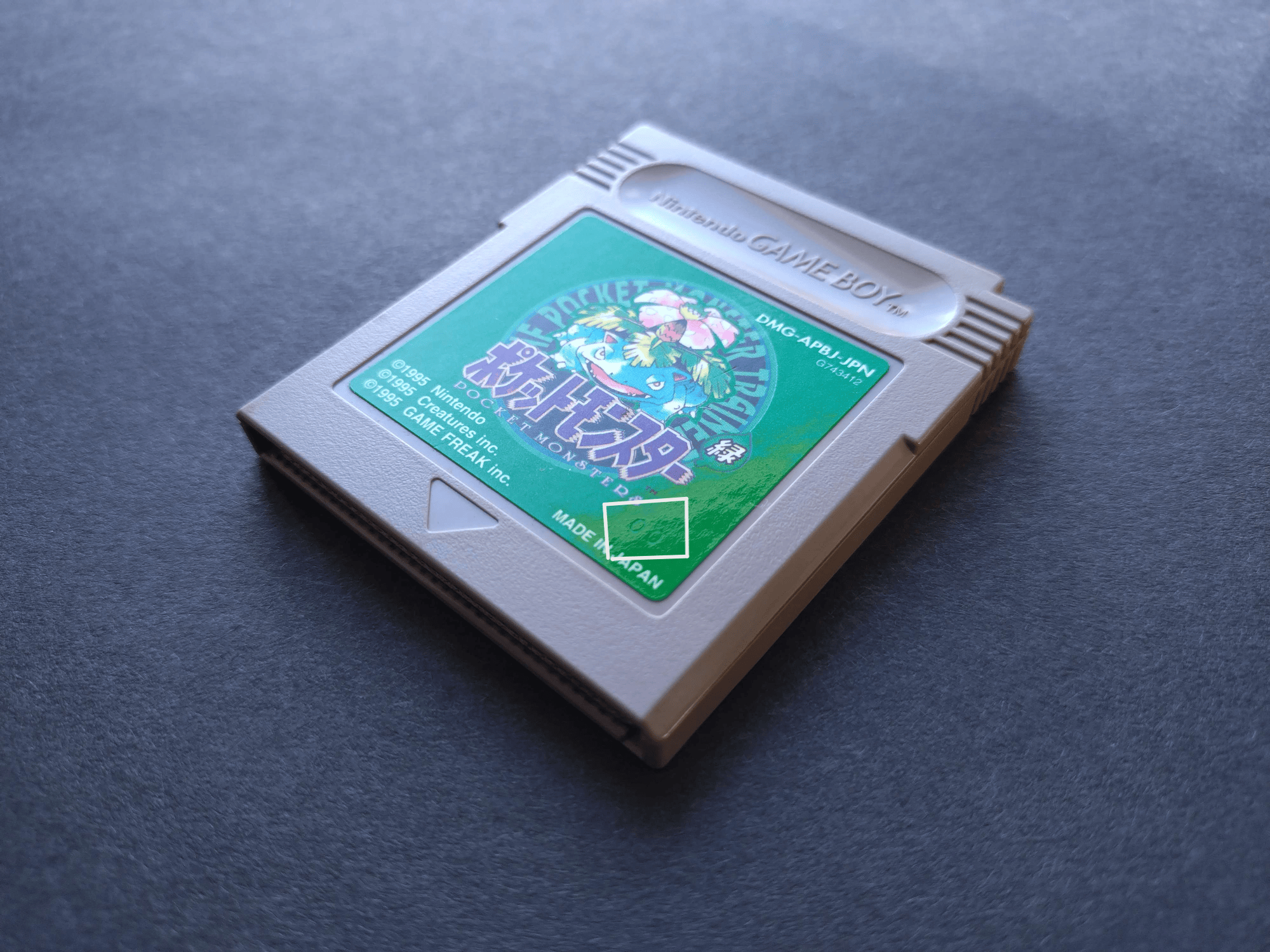
A Red or Green cartridge from the true first print runs will have a strictly numerical code stamped on the label. In general, at the time, Nintendo cartridges (including Super Famicom and Game Boy) would apply a letter suffix to indicate a software revision. E.g., 20A.
NOTE: There are unconfirmed reports of no-code cartridges, but historically these have been an indication of a reproduction. No direct evidence suggests this is a real phenomenon on authentic copies of these games.
Mask ROM date codes coinciding with the below label codes suggest these were among the very first manufactured:
- Green label code:
00 - Red label code:
22
A look at the circuit boards (PCBs) of Green and Red indicate they were produced a few months before the launch of the game (around November 1995).
The board chips were produced a little bit later in this case, in the fourth or fifth week of 1996 (component date codes: 9605 (Red) and 9604 (Green); 96 is the year and 05/04 is the week).
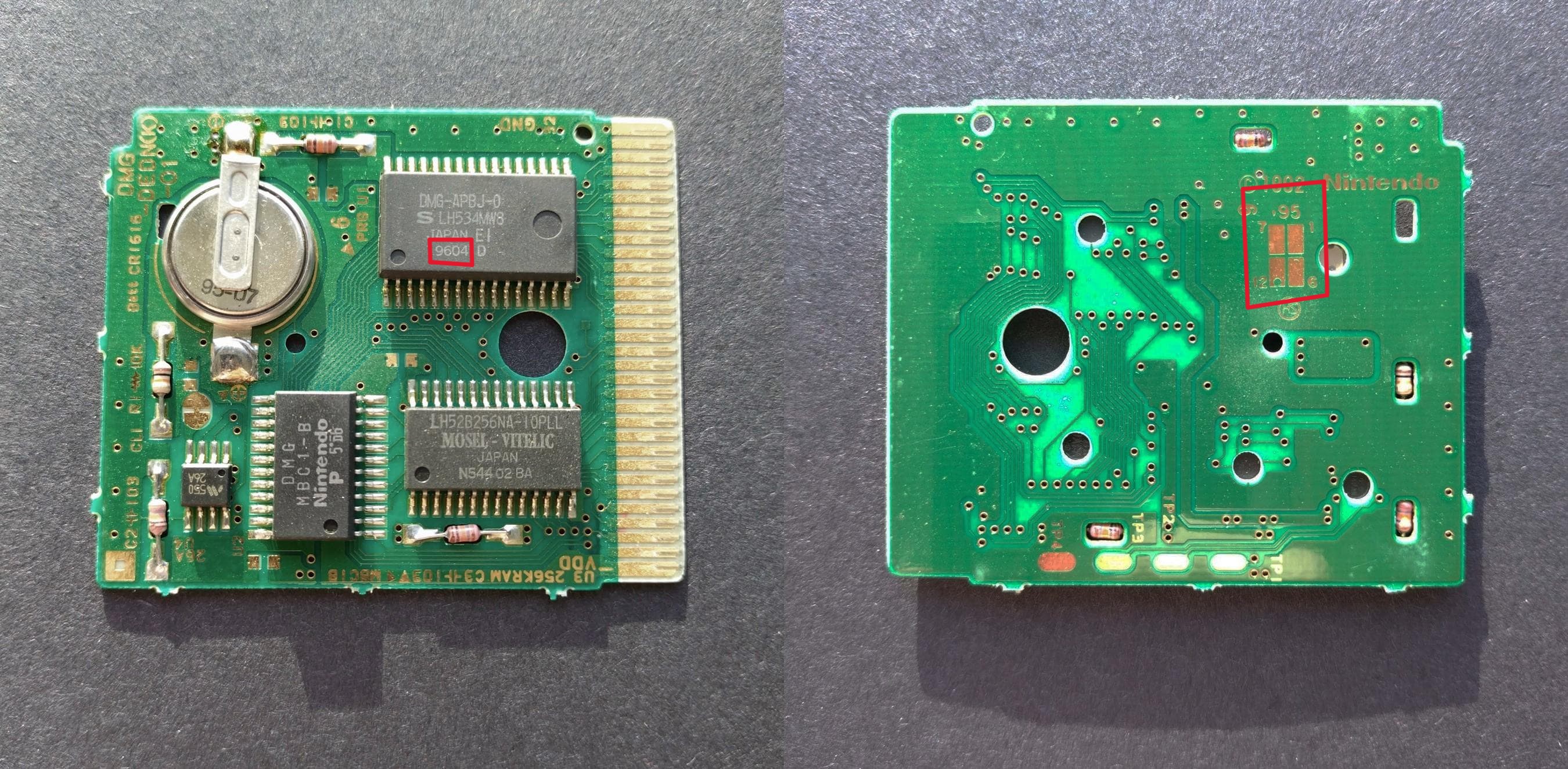
Early Green version circuit board

Early Red version circuit board
According to sources, Red would later receive a 00 label code, and Green received a 20 code as well, but this was well after the initial release period (late April into May 1996).
As further suggestion of the sequence, here's a 22 code Red cartridge with a print date about 5 weeks before a 00 code cartridge.
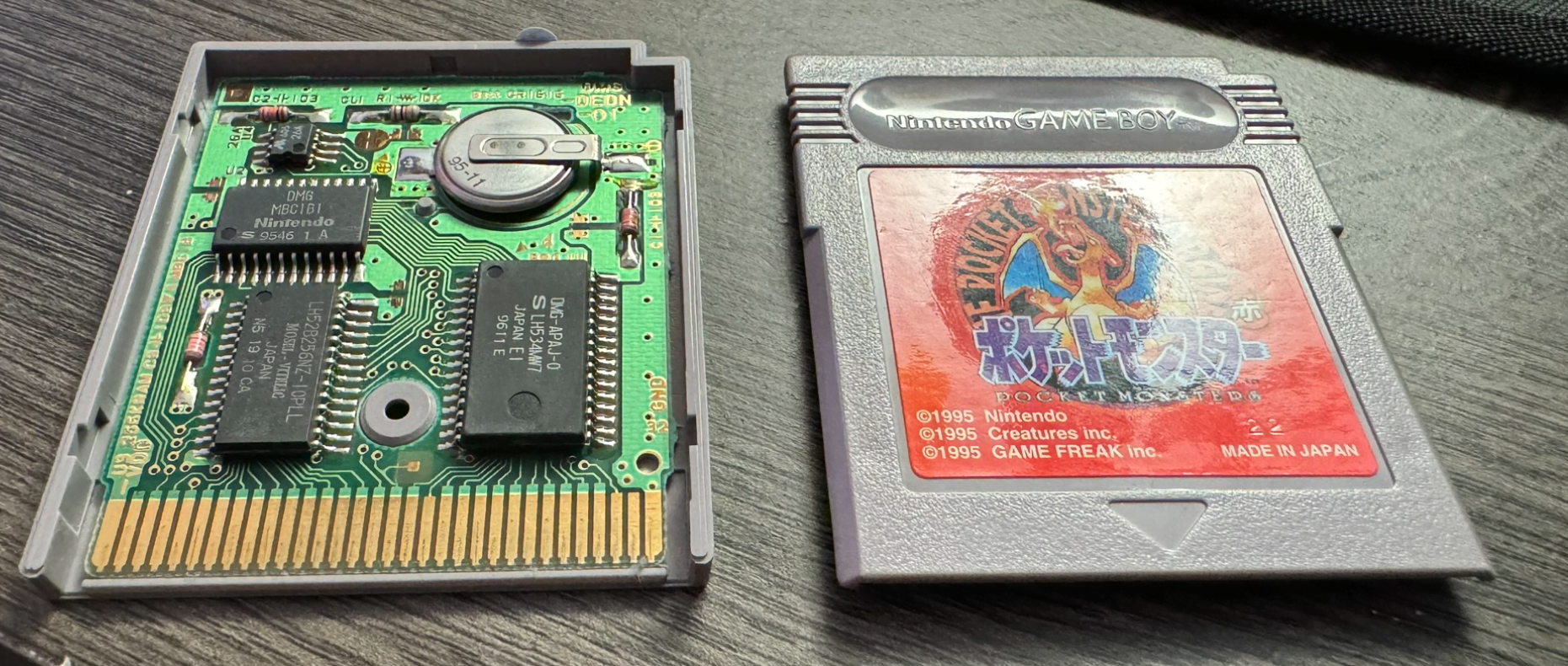
22 code Red cartridge with date code 9611 (11th week of 1996).

20 code Red cartridge with date code 9616 (16th week of 1996).
Finally, sometime before November 1996 (likely around June as indicated by the earliest date codes of these revisions), the label codes 00A (Green) and 22A (Red) were printed for the 1.1 software version (which would also be the sole revision used on Blue version, released in December of the same year).
Here's a translated reference on which label codes can be found on Red, Green, Blue, and Yellow versions, as gathered by folks in the Japanese collecting/gaming communities (source linked at the end of this post):
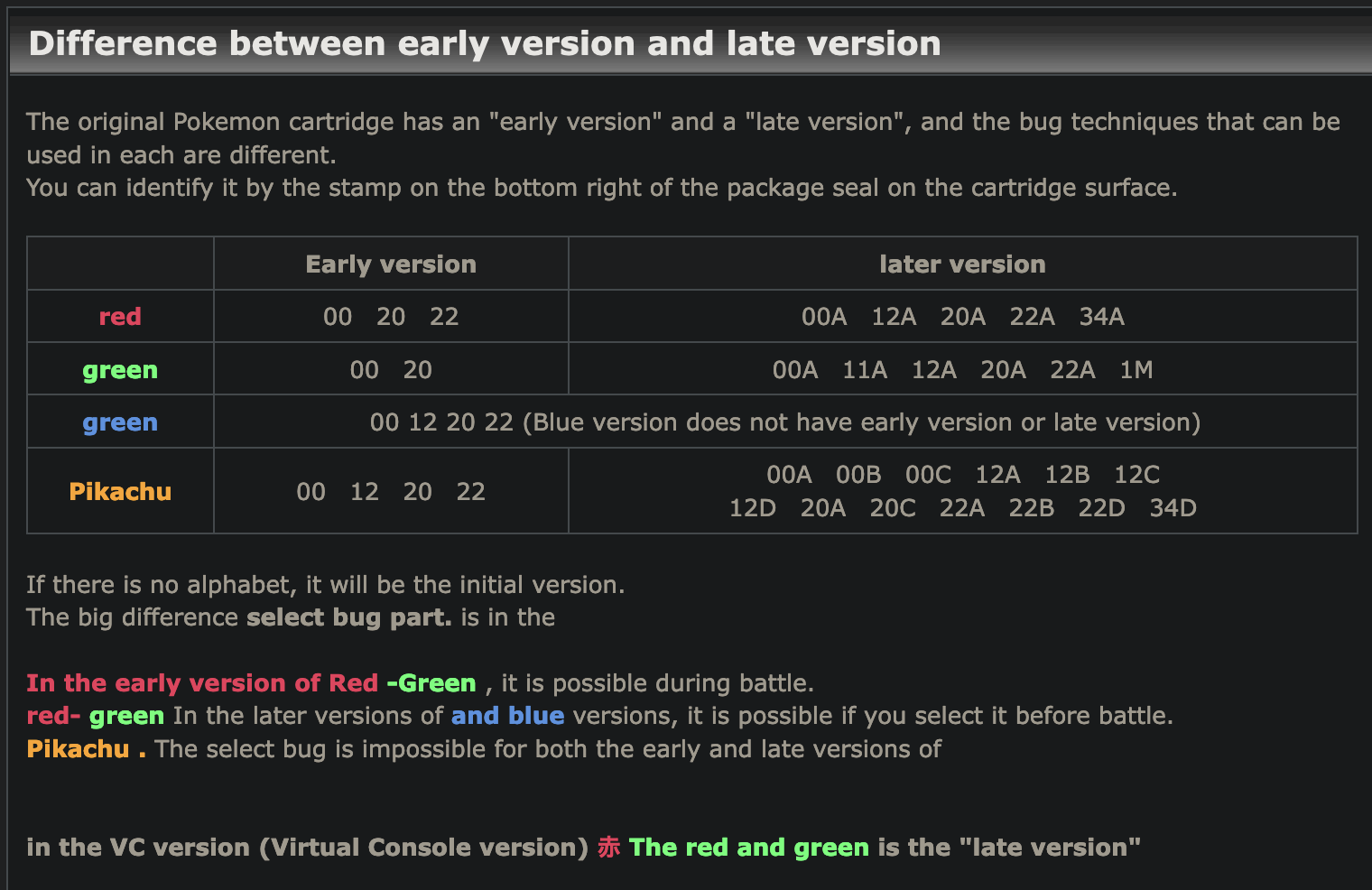
Worth noting is that the letter at the end of the code (e.g., A or B) typically denote a software revision for bug fixes and the like. Yellow is well known for having many patches (since it had codes with D, it had at least four revisions).
Something else that remains unclear here is the 1M code for Green version. This needs additional research to know exactly what caused the jump from A to M. Perhaps a very late print in the game's lifespan. If a PCB with those codes emerge, it will be very illuminating!
Survey
Another document included in the earliest printings is a customer feedback postcard, only available during the first 30 days after release, and had to be postmarked by the end of March. Customers would be entered into a free raffle for the official guidebook or special playing cards, as well as an additional copy of either Red or Green version.
Interesting fact: Ishihara-san, President & CEO of Game Freak, indicated in an interview that initial sales were lower than expected during the first 30 days, which explains why these surveys are relatively scarce today.
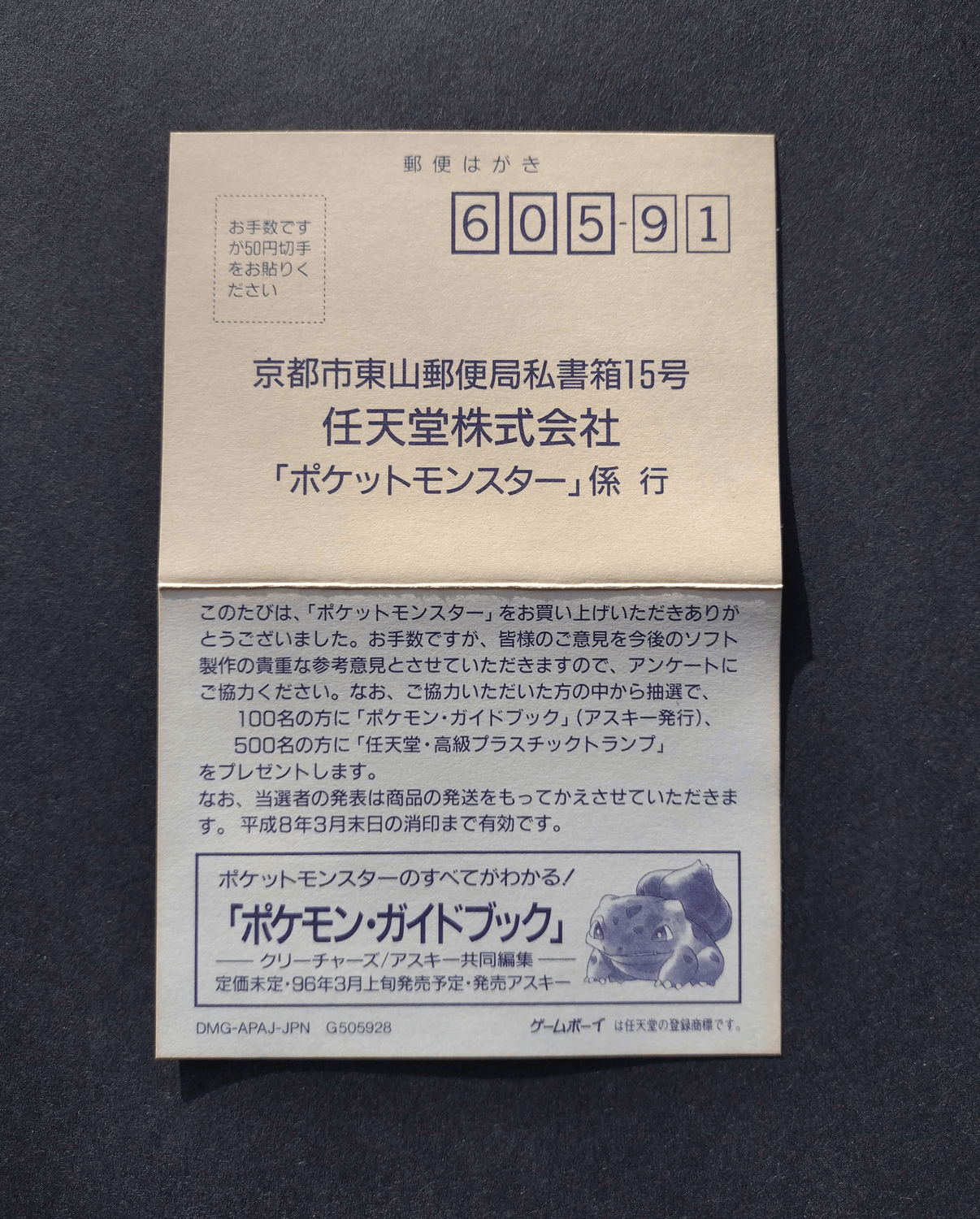
The front of the postcard translates to roughly the following:
"Kyoto City Higashiyama Post Office P.O. Box No. 15. Thank you for purchasing Pocket Monsters. Sorry to trouble you, we request your opinion as valuable reference for future software. Additionally, a lottery will be run for participants. Winners may receive: (100 Winners) Pocket Monsters Guidebook or (500 Winners) Special Playing Cards. In addition, the announcement of the winner will receive a free copy of either version. This is valid until the end of March, 1996."
The bottom box (featuring Bulbasaur) in the survey (roughly) reads:
"It's all about Pocket Monsters! "Pocket Monsters Guidebook" – List price undecided. Scheduled to be released early March, 1996."
This text lines up perfectly for the late February release of the games.
Sources also also tell me that the surveys appear to be uniformly were printed with the Red model code, DMG-APAJ-JPN (where APAJ is the Red code). A Green version code has yet to be uncovered for these postcards.
And of course, here is the other (informational) side customers would fill out:
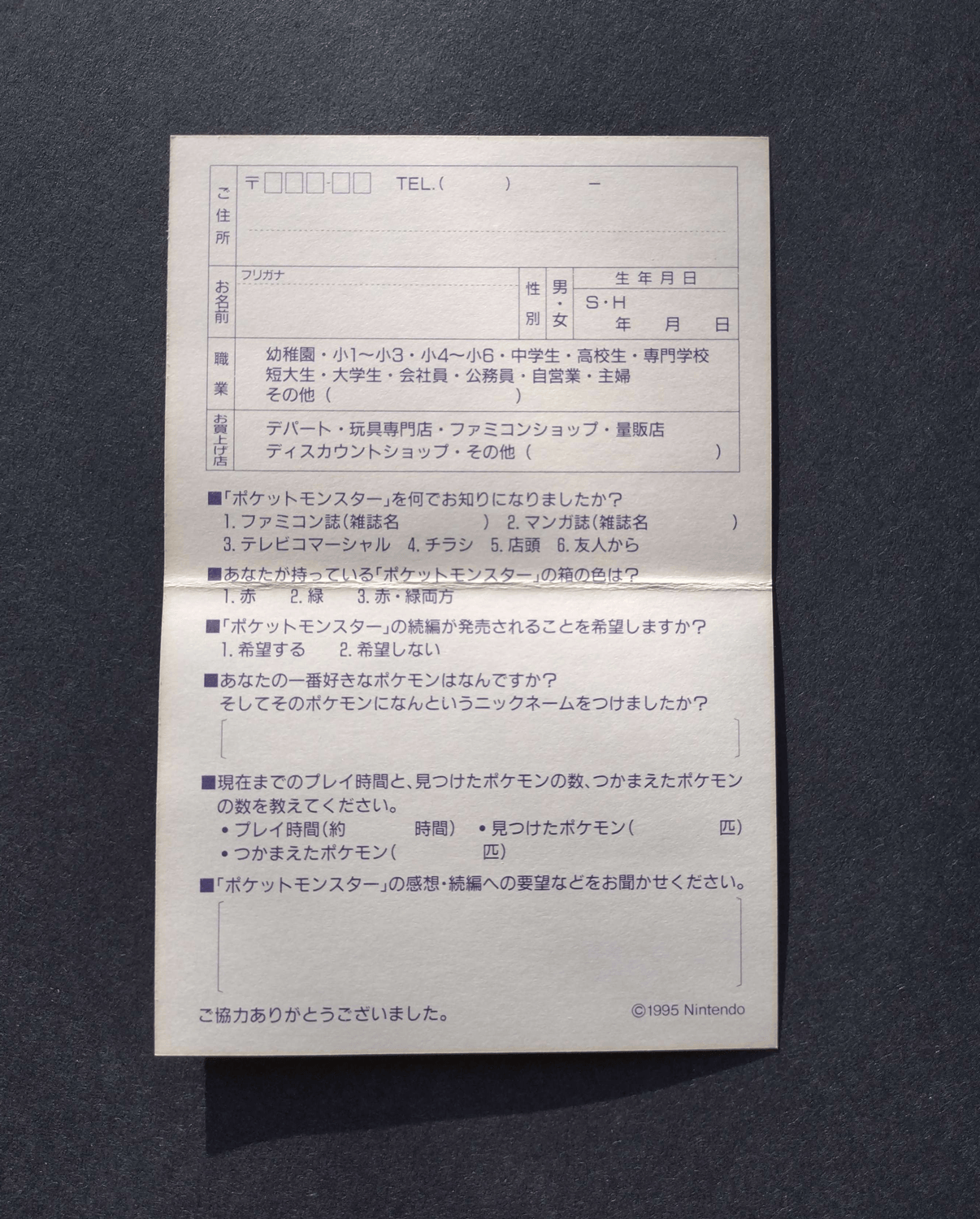
I hope this dive down history lane was fun! It makes for an interesting hunt when you can find the most obscure, early prints of these otherwise abundant games.
Sources
- The Mikaifu Collection - General timeline information
- Thaane (via SACK Discord server) – Photos & production code data
Revisions:
- 01/24/2024: Added photos of
00and22code cartridges, with date codes specified.
